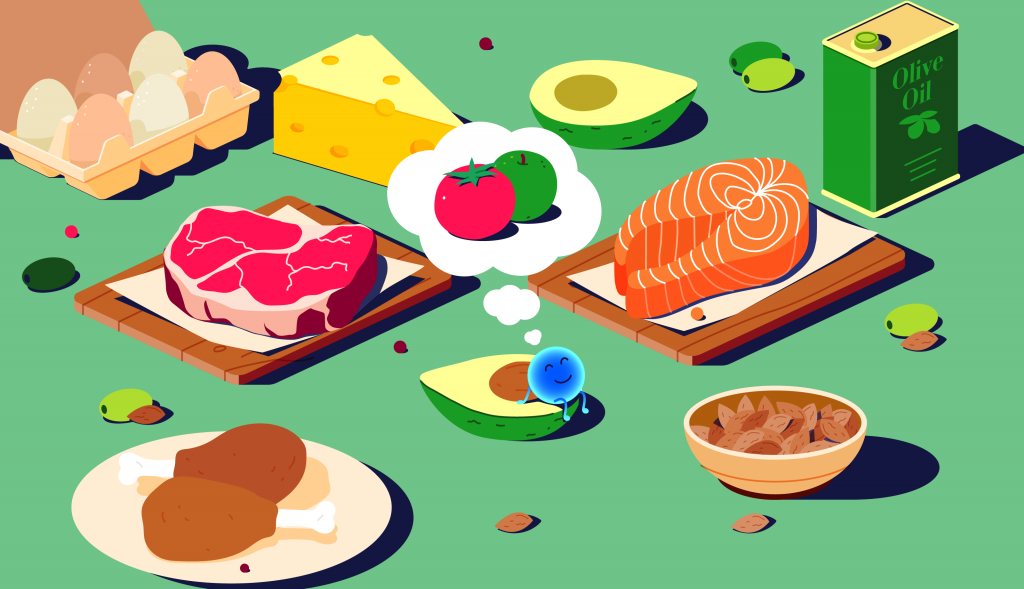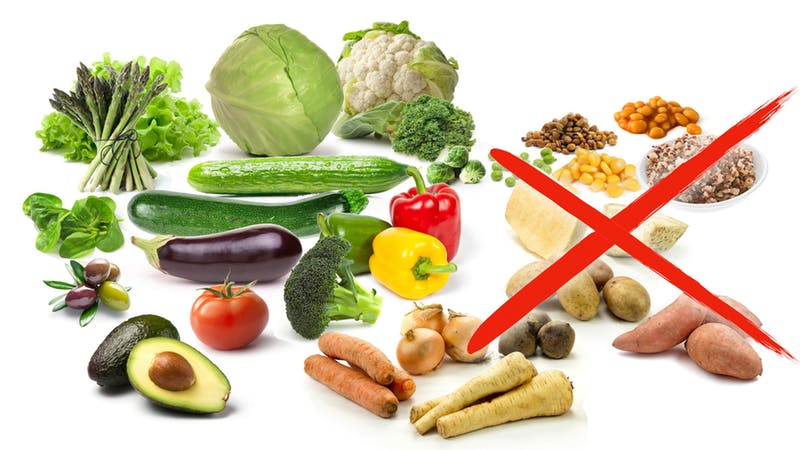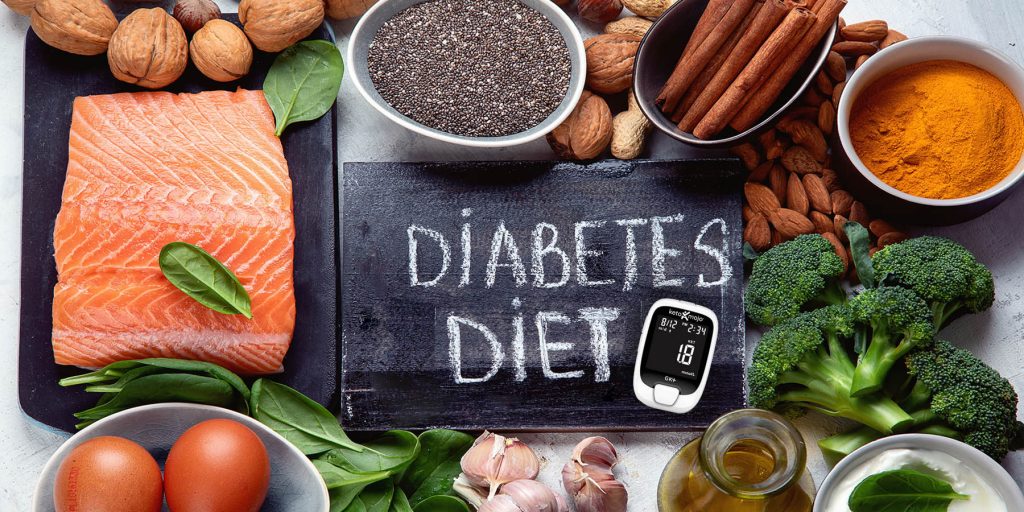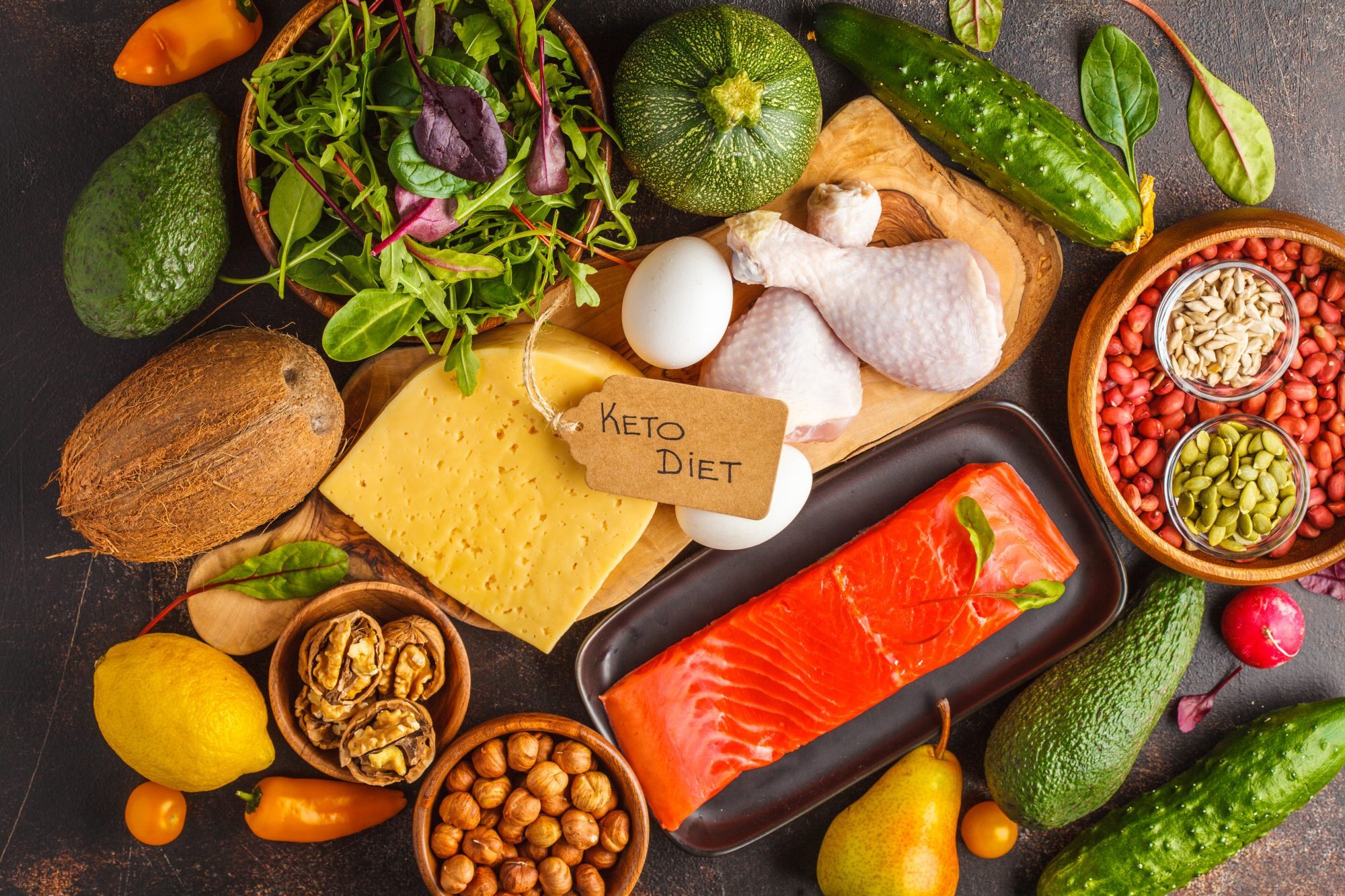There is no doubt that the ketogenic diet is one of the most popular and thoroughly researched diets today. The debate about the ketogenic diet is divided between two clear sides:
Some believe that the ketodiet leads to postpartum weight loss of more than 30 pounds. And it even helps keep people with type 2 diabetes healthy.
There are also those to whom this diet has not suited. People who have decided to give it up say that the diet did nothing and even worsened their condition.
However, despite all the positive and negative reviews, you may still not know about some of the details of ketodieta. For example, what it is, how it works and exactly how much butter and cheese to eat.
What is ketodieta
Short for “ketogenic diet,” this meal plan aims to minimize carbohydrates and increase fat intake so that the body can use fat as a form of energy.
Although each person’s body and needs are different, the average calorie intake statistics are as follows:
- 60-75 percent – calories from fat
- 15 to 30 percent – calories from protein
- 5 to 10 percent – calories from carbohydrates
During the ketodiet, you should eat no more than 50 grams of carbohydrates per day. Some people use a strict ketodiet and eat as little as 20g.
What is ketosis
About a week after starting a ketodiet, you go into what is called ketosis. This is a condition in which the body does not have enough carbohydrates that the cells use for energy. This is when you start producing ketones or organic compounds, which are then used by the body to replace the missing carbohydrates. At this stage, the body also starts to burn fat for extra energy.
So, how do you know if you’re in ketosis? There are a few side effects that can even be scary. For example, breathing that smells a bit like nail polish remover (seriously). You can also use ketotest strips or a breath analyzer.

How the ketodiet was developed
Believe it or not, the ketodiet was originally developed to help people suffering from seizures, not for weight loss. This is because both ketones and another chemical, beta-hydroxybutyrate, produced by the diet help minimize seizures.
But people who have started following the ketodiet have noticed weight loss. When you eat carbs, the body stores fluid to store carbs for energy (you know, just in case). But when you’re low on carbs, you lose weight due to dehydration. Also, it’s easy to overdo it with carbs. But if you have enough fat on your menu, it will help curb food cravings by making you satiated.
This, and the fact that ketosis encourages the body to burn fat, means that you can end up losing weight quite dramatically.
Are there different types of ketogenic diets
It’s easy to think that the ketodietà is universal for everyone, in fact there are several different types of it. They all have different benefits depending on your nutritional goals.
Cyclic ketodieta
The cyclic ketodiet is similar to the standard ketodiet, except for one to two days per week. Five to six days a week a person on the cyclic ketodiet will eat according to the standard guidelines. Then for one or two days he will have a carbohydrate cycle. Also known as a carbohydrate return day. On this day, the portion of carbohydrates will be 140 to 160 grams.
Athletes often follow this type of ketodiet. They need a day of carbohydrate recovery to replenish glycogen stores in their muscles. High levels of athletic training deplete almost all of the glycogen from their muscle stores. Therefore, they need to replenish it.
However, it’s important to note that even if you decide to stick to this diet, it doesn’t mean that the weekend should include lots of processed foods and desserts. Instead, opt for whole grains, starchy vegetables and fruits for carbs.
Targeted ketodieta
On this diet you should follow all the recommendations of the standard ketodiet. With one exception, consume carbohydrates before strenuous exercise. Typically, people following the ketodiet will consume 25 to 50 grams of carbohydrates about 30 minutes before a workout. They often find that this method helps them feel stronger and more capable during their workouts.
Although it temporarily takes your body out of ketosis, the condition will resume within a few hours. This depends on how many carbohydrates you have consumed. Essentially, the theory behind this diet is that because the extra carbs are immediately burned, they will not be deposited as fat.
Vegan keto diet
The vegan ketodiet is for those who wish to follow a high-fat, low-carbohydrate diet but do not consume animal products. This can be difficult to achieve. Because many people on the ketodiet rely on animal products for the majority of their diet.
Common sources of protein for vegans on a keto diet include tofu, nuts and nut butters, and legumes.
Although the vegan keto diet is difficult, it is not impossible. It only requires careful planning.
Other offshoots of keto
When something is popular, it’s pretty much a guarantee that people will come up with new or easier ways to do it. For example, with lazy keto, people try to limit their carb intake to 20-50 grams a day, but don’t really even track them.
“Lazy keto” is a waste of time. You haven’t developed good habits yet, and it’s too easy to go back to a high-calorie diet.
If you’re trying to get on a lazy ketodiet, it’s better to follow the recommendations of experts and control your diet based on proportions and macros instead. It’s easier, more flexible and proven. Combined with moderate exercise, this plan is effective in the long run.
Combining keto with intermittent fasting
You’ve probably heard that many people get excited about combining keto with intermittent fasting. Just in case you’re not familiar with intermittent fasting, here’s a quick guide. Intermittent fasting is based on a regimen of eating and periods of fasting, that is, times when you don’t eat.
This can look different for everyone. Some popular forms are the 16:8 diet, in which you fast for 16 hours (usually from lunch to brunch) and eat for eight hours. Another option is the 5:2 diet. In this, you consume less than 500 calories for two non-consecutive days a week and then eat normally for the rest of the week.
Many claim that following keto along with intermittent fasting is great for weight loss. However, any results you will see are likely to be short-lived. This means that when you start eating regularly again, you will gain weight again.
Combining an ultra-restrictive diet with long periods of not eating is not good. The body will absorb its own muscles for energy if food intake is too low. But the body doesn’t differentiate between something like calf muscle or heart muscle. Keep in mind that all important organs are made up of smooth muscle. Following such a diet can harm something like your bladder or lungs.
On an intermittent diet you literally starve yourself. Such methods are attractive because weight loss increases from one kilogram per week to four. But it is mostly lean muscle (not fat) that disappears. Muscle is necessary for healthy functioning, and it is very difficult to regain it as you age if it disappears.
“Intermittent keto” is not recommended to try unless you have discussed it with your doctor or nutritionist.

What foods you can eat on the ketosis diet
Although there are different versions of keto, let’s say you are thinking about following a standard keto diet for convenience. The fact that you won’t eat your favorite carbohydrate foods doesn’t mean you’ll go hungry. You’ll be getting healthy fats (like olive oil and avocados). Also plenty of lean protein, such as grass-fed beef and chicken, as well as leafy greens or other non-starchy vegetables.
The good news is that snacking is totally allowed, and it’s not just carrot sticks. There are plenty of packaged options designed for keto fans.
For coffee lovers lamenting the loss of vanilla lattes, there are also keto options. It’s a standard coffee, but with the addition of cream from free-range cows’ milk and medium-chain triglyceride (MCT) oil to help boost healthy fats in the morning.
If you’re looking for something for the sweet tooth, keto fat bombs have a lot of fans. As the name suggests, these are small snacks that are high in fat and low in carbs, so you can stick to your diet even when you decide to indulge.
And if you can’t survive without pasta, there are plenty of foods like organic black bean spaghetti. They’ll give you the feeling of pasta without the carbs.
How to order keto at any restaurant
A few things to avoid right away when dining out: skip a dish if it’s breaded (hello, carbs!), and refuse plates of noodles or rice as a base. It’s always best to avoid glazed foods, as that equates to a lot of sugar. Oh, and leave out burger buns and say goodbye to French fries. Avoid sauces with added sugar such as ketchup, barbecue sauce, and honey mustard. Create your own version of dishes, such as scrambled eggs and vegetables. Fortunately, ketodietas allow cheesy, creamy sauces that should be avoided on other diets; they also give you a full range of meats to choose from (steak, chicken, fish, etc.). And, as always, fill your plate with as many leafy greens and carb-free vegetables as possible.
Here’s the catch: you may have to go beyond the menu to find exactly what you’re looking for.
If you see an inappropriate ingredient in a dish, ask for it to be replaced or removed from your order.
What foods to avoid
Since you will focus on fats and proteins – large plates of pasta or other grains will definitely not be in your diet. This also means that starchy vegetables (such as potatoes and carrots) and legumes (such as chickpeas, lentils and black beans) are banned.
It is also forbidden to eat sweets – artificial or natural. Candy, cakes and doughnuts are not; and even lots of fruit is forbidden. Apples, bananas, pears – they all contain tons of sugar, which is definitely a carbohydrate.
Another grey area of the ketodieta is alcohol. Many beers and sweet cocktails are banned, as are some sweeter wines.
What a weekly keto diet plan looks like
Below are the food options for the week that follow standard ketodiet recommendations, are low in carbs and high in fat and protein.
Breakfast options:
- Green omelette
- Keto bake with gravy
- Ketobanana muffins
- Green smoothie
- Ham and cheese breakfast rolls
- Baked egg
- Avocado boats
- Ketokish
Lunch options:
- Salad with chicken and avocado
- Easy broccoli and cheddar soup
- Greek salad with chicken
- Shrimp salsa verde salad
- Chicken with tomatoes and pesto sauce
- Grilled chicken breast with garlic and herbs
- Egg roll in a cup
Dinner meal options:
- Cauliflower, rice and chicken
- Tuscan cream shrimp
- Pork chops
- Stuffed tacos
- Spinach, artichoke, chicken casserole
- Grilled salmon
- Philly cheesesteak with portobello mushrooms

Does Ketodieta have any side effects
It usually takes three to four days for the body to enter a state of ketosis because you have to use up your glucose reserves, i.e. sugar, first. Any major change in diet will cause some problems. Often women are approached who complain of symptoms similar to those of irritable bowel, and feel broken at the beginning of the diet. Fatigue occurs because there is less access to carbohydrates, which provide quick energy.
These problems are part of what’s known as ketogrippe.
Other side effects of the ketodiet, all of which are related to giving up carbs, include dizziness, nausea, mental fog, cramps and headaches, and fatigue. Fortunately, keto flu usually does not last more than a week. Usually after that time, people begin to see a decrease in the numbers on the scale.
In addition to the typical complaints of ketogrippe, frequent side effects of ketodieta are diarrhea and ketohydration.
Will the ketodiet help to lose weight
As mentioned, there are several reasons why the ketodiet is usually equated with weight loss gold. First, people usually reduce their daily calorie intake to about 1500 calories per day (the average norm) because healthy fats and lean proteins make you feel satiated earlier and for a longer period of time. Also, it takes more energy to process and burn fat and protein than it does to burn carbs, so you burn slightly more calories than before. Over time, this will lead to weight loss.
Everyone is different, and how much you weigh when you start the diet matters, but you can safely lose one to two pounds per week on keto (sometimes more, sometimes less, depending on a person’s calorie needs).
It’s worth noting: ketodieta is not a miracle fat burner. Calories in fat are still calories in fat, so exercising and keeping your overall intake at reasonable levels is the only way that works. If you’re on the ketodiet, but you’re consuming more calories than you need to, it will still add fat to your body.

Can ketodieta help with prediabetes or diabetes
There is some evidence that it can help with type 2 diabetes:
New research shows that ketoplan has some real benefits due to its ability to improve the body’s ability to use insulin, as well as help control appetite, which will lead to easier weight loss. However, if you have diabetes, you should consult your doctor before switching to a new diet.
Beyond that, experts are not sure if ketodieta has any other scientifically proven health benefits. In fact, it may have clear disadvantages. If you’re not following the ketodiet, such as eating a lot of saturated fats instead of healthy unsaturated fats, you risk raising your cholesterol levels.
The best strategy for keeping your heart healthy is to get as much fat as possible from unsaturated sources such as olive oil, avocado oil, nuts, seeds, avocados and olives. It is actually possible for some people to raise their cholesterol levels if the fats in their diet come from a variety of healthy sources.
Also, keep in mind: this diet will not support good bones, a healthy brain, heart, colon or gut microbiome. It can lead to plaque buildup in the arteries, causing a heart attack or stroke.
Is it worth trying keto
The ketodiet isn’t easy and isn’t necessarily healthy when followed for an extended period of time.
Some groups of women may not be suitable for ketodiet:
The ketogenic diet is not suitable for people with any stage of pre-existing kidney or liver disease. The increased protein intake typical of a ketogenic diet will put extra strain on the kidneys. An emphasis on high-fat foods will potentially lead to non-alcoholic fatty liver disease.
You should also not be dieting if you are pregnant. Fetal growth is largely dependent on glucose, not carbohydrates. A low-carb diet will affect the baby’s growth.
It is also not recommended that people with digestive disorders follow a ketogenic diet. Fiber is an extremely important nutrient for digestive health, and people on a ketogenic diet are often deficient in this nutrient. Without using whole grains and fiber sources of carbohydrates, it is difficult to get the recommended daily amount of fiber (25 to 35 grams) from non-starchy vegetables alone.
If you don’t fall into any of these groups and are interested in following keto for a short period of time, it’s important to set yourself up for success by making sure you have the right ingredients and tools.



